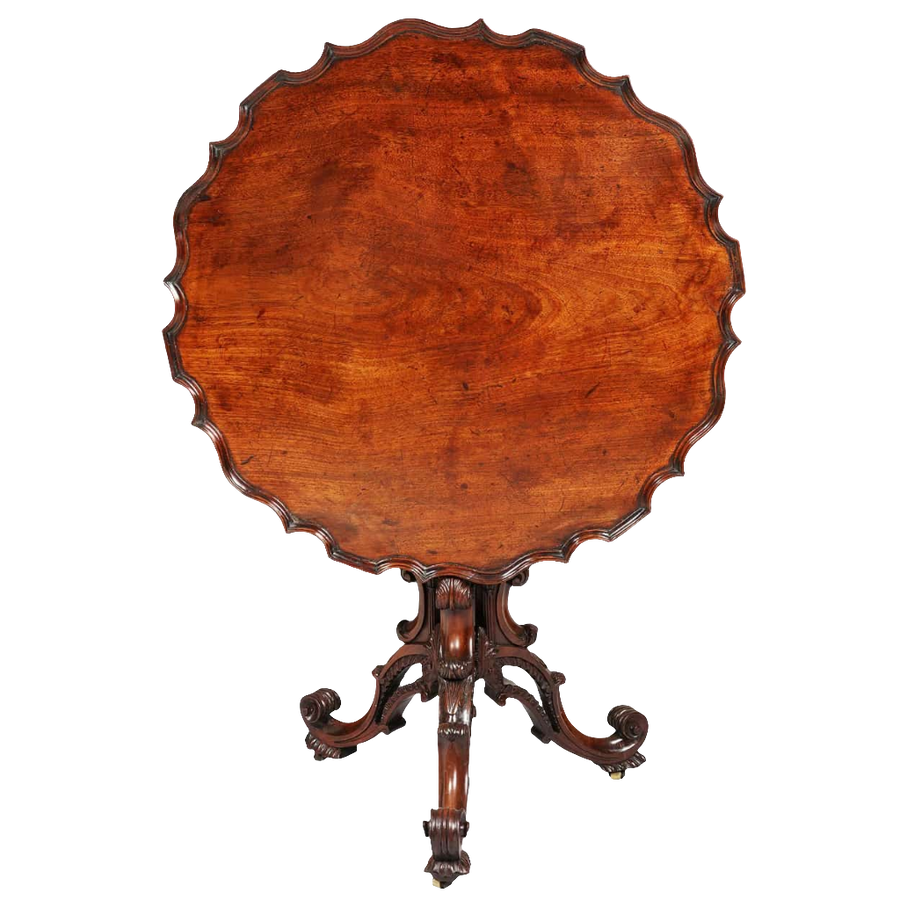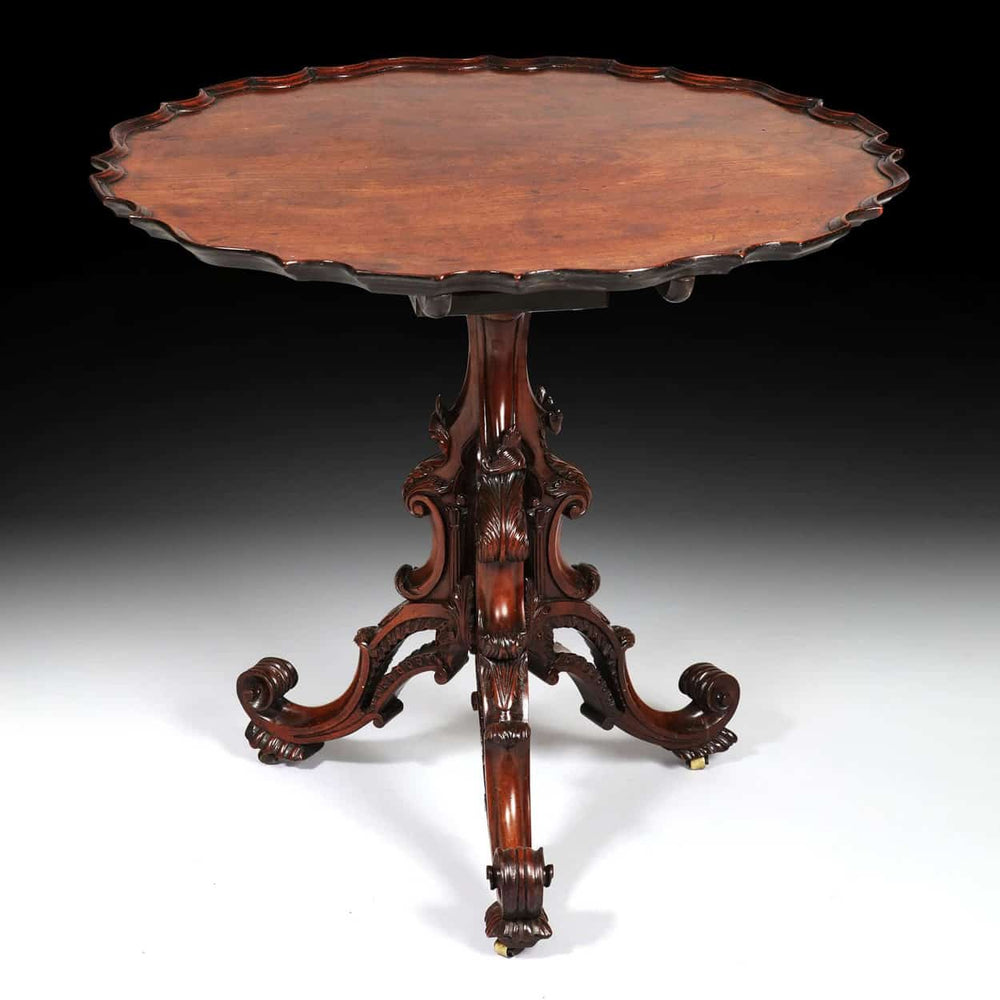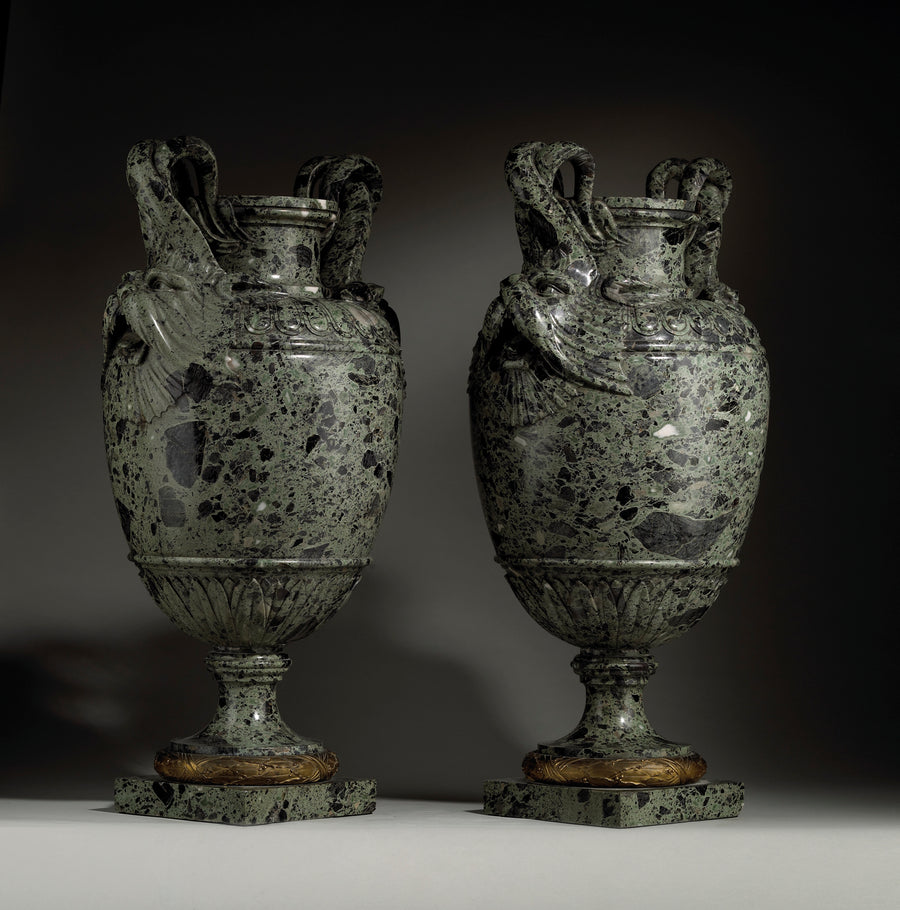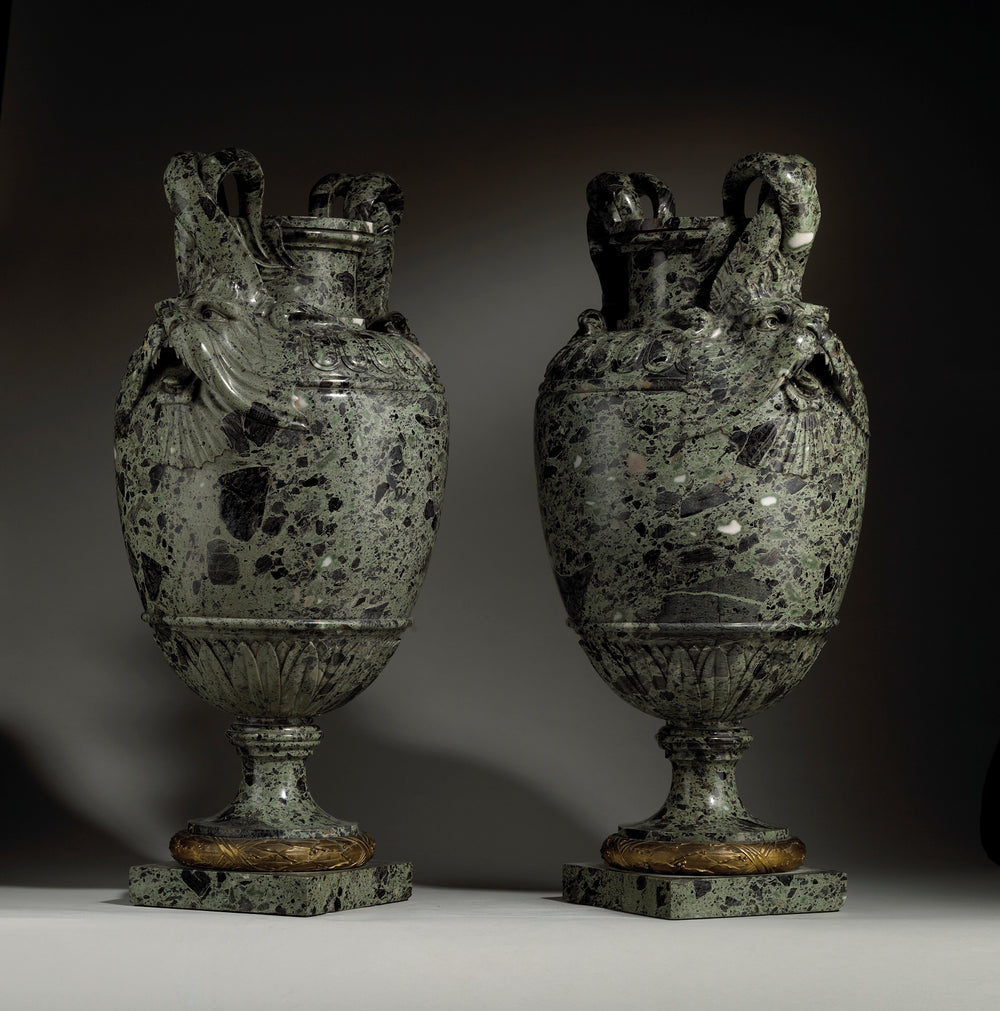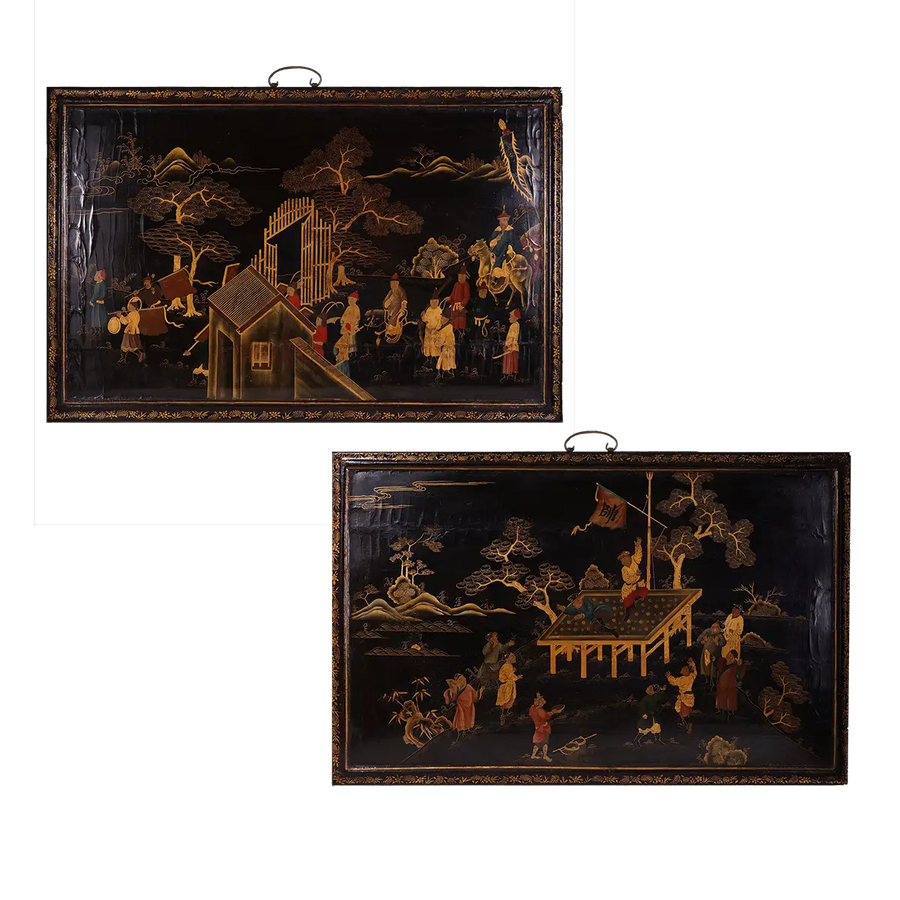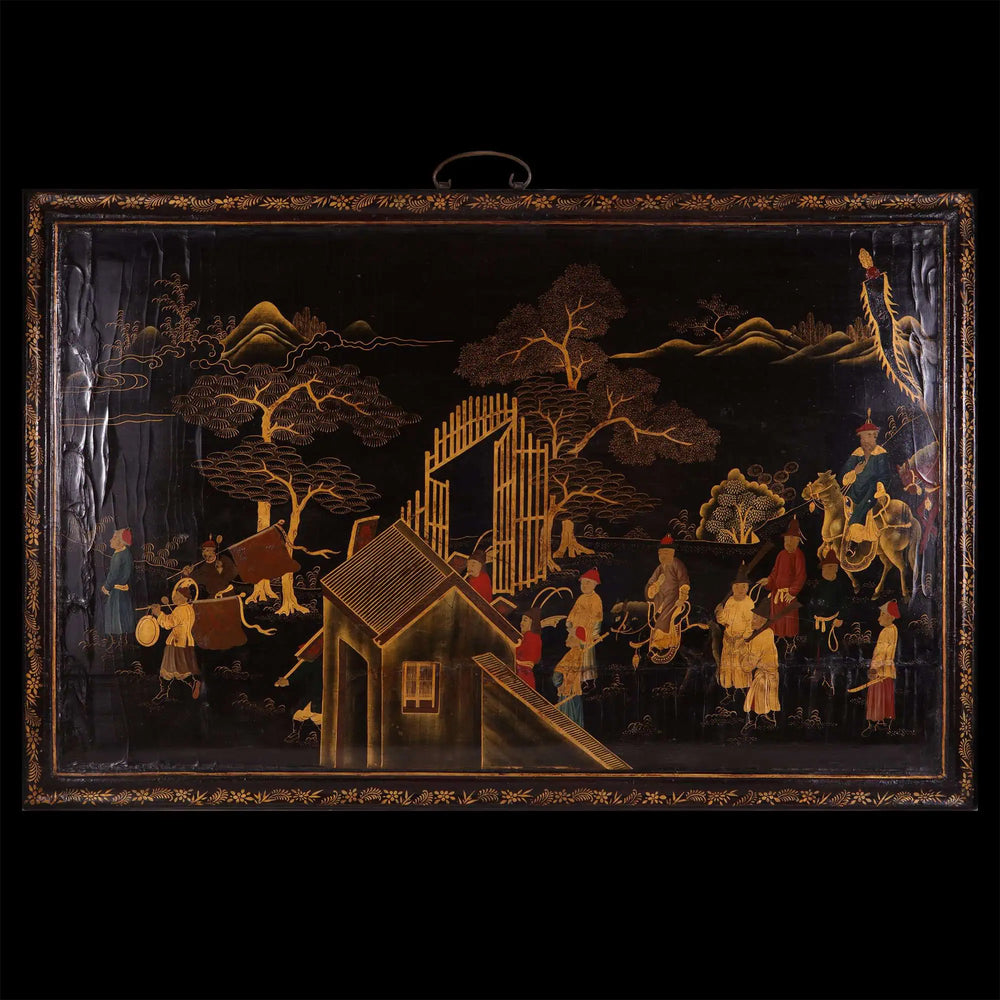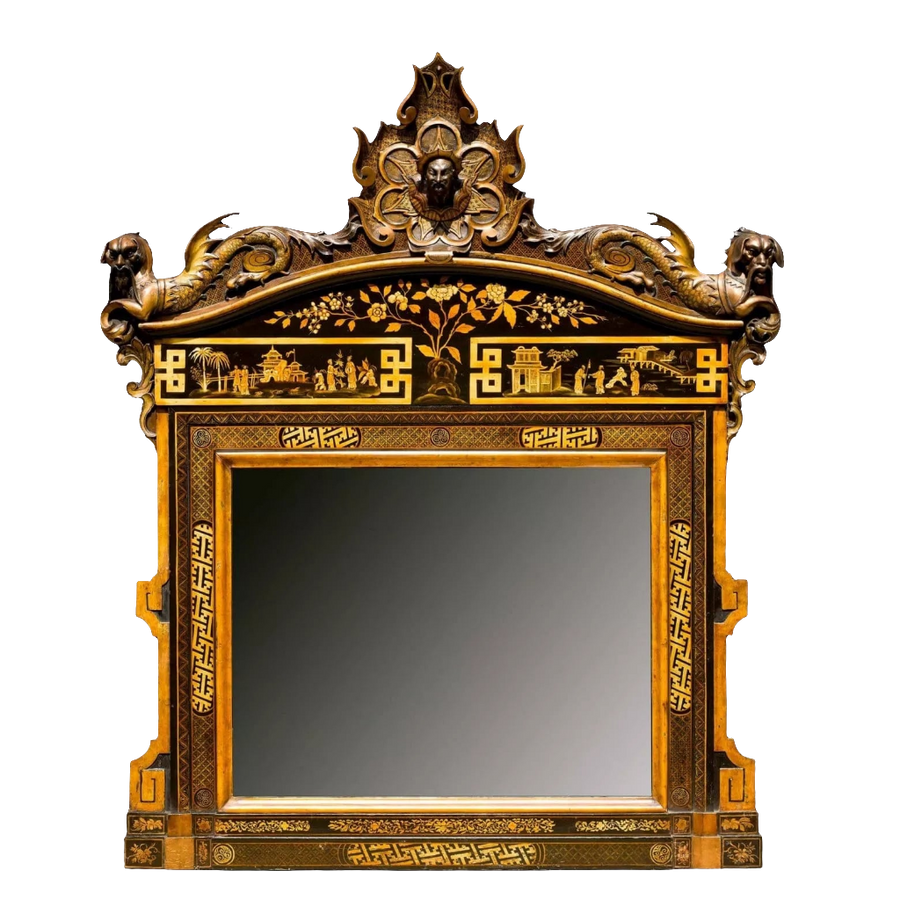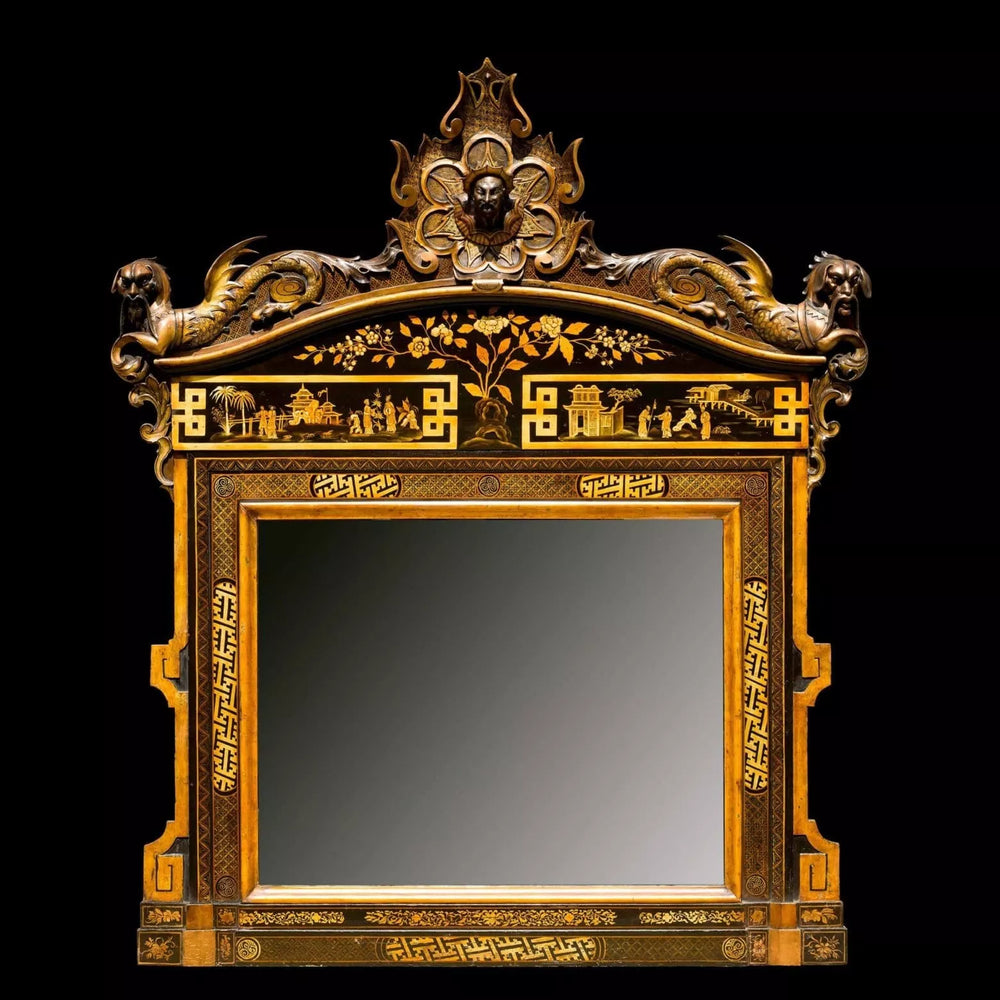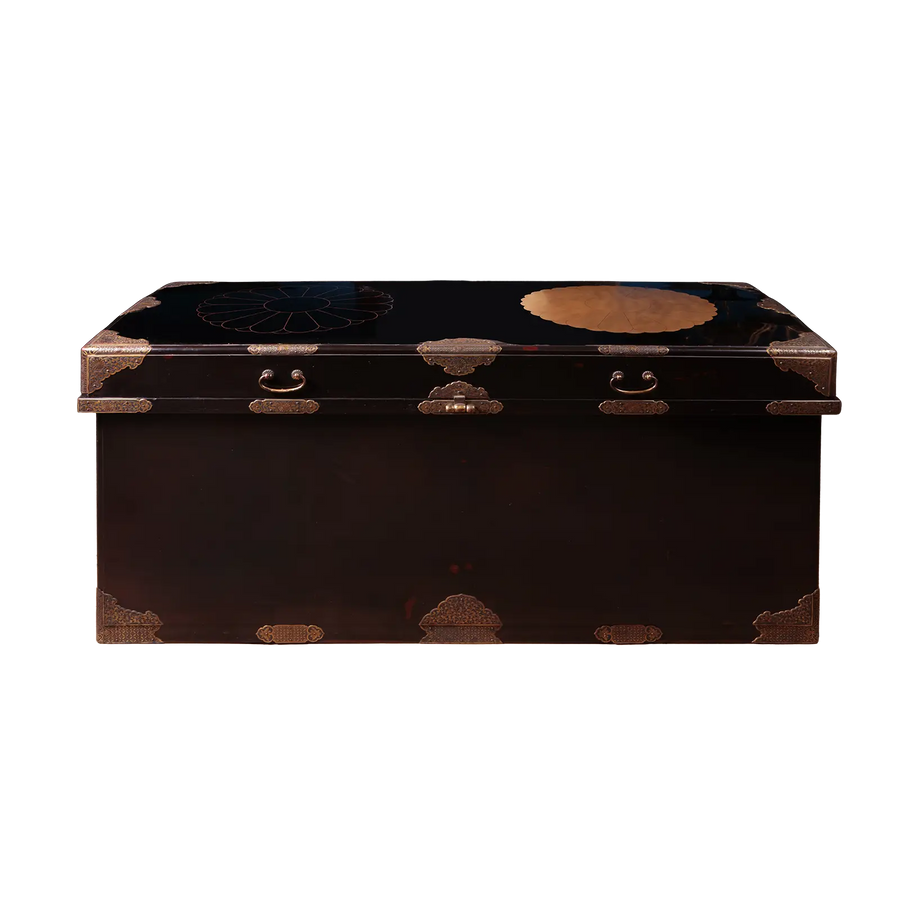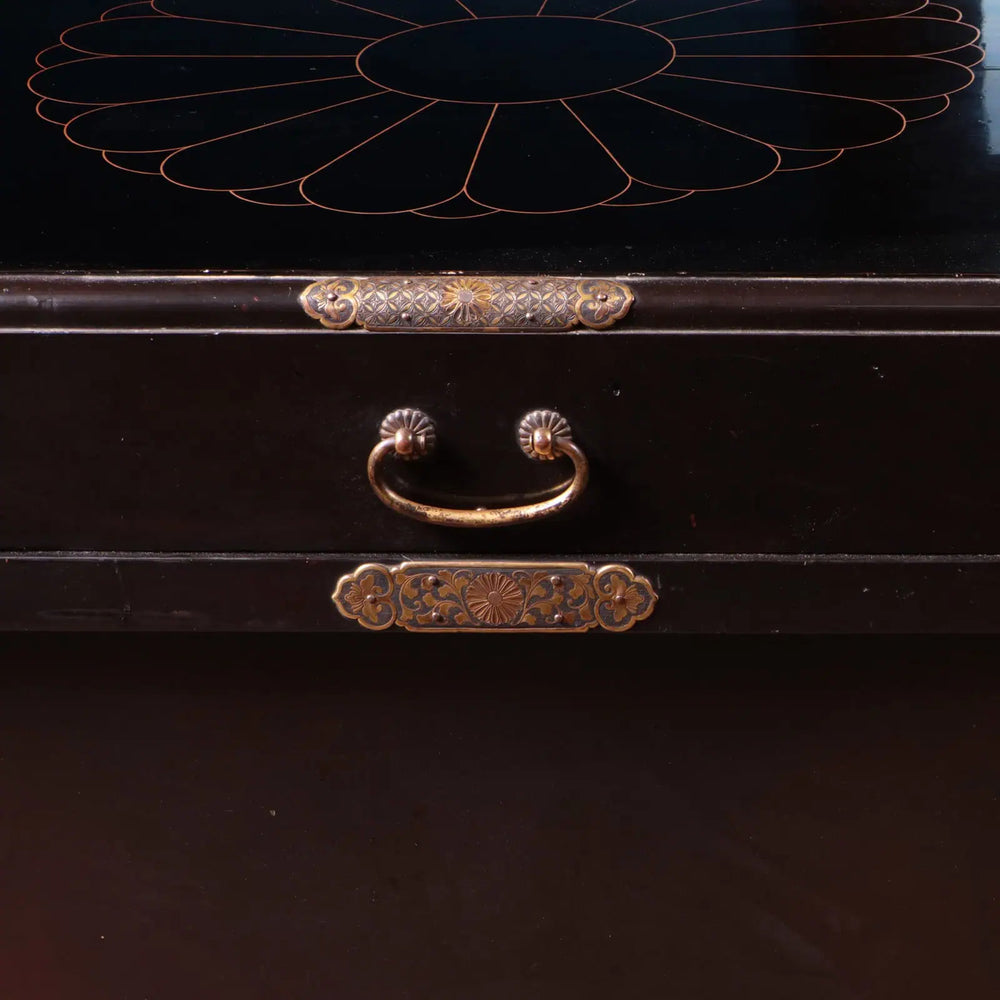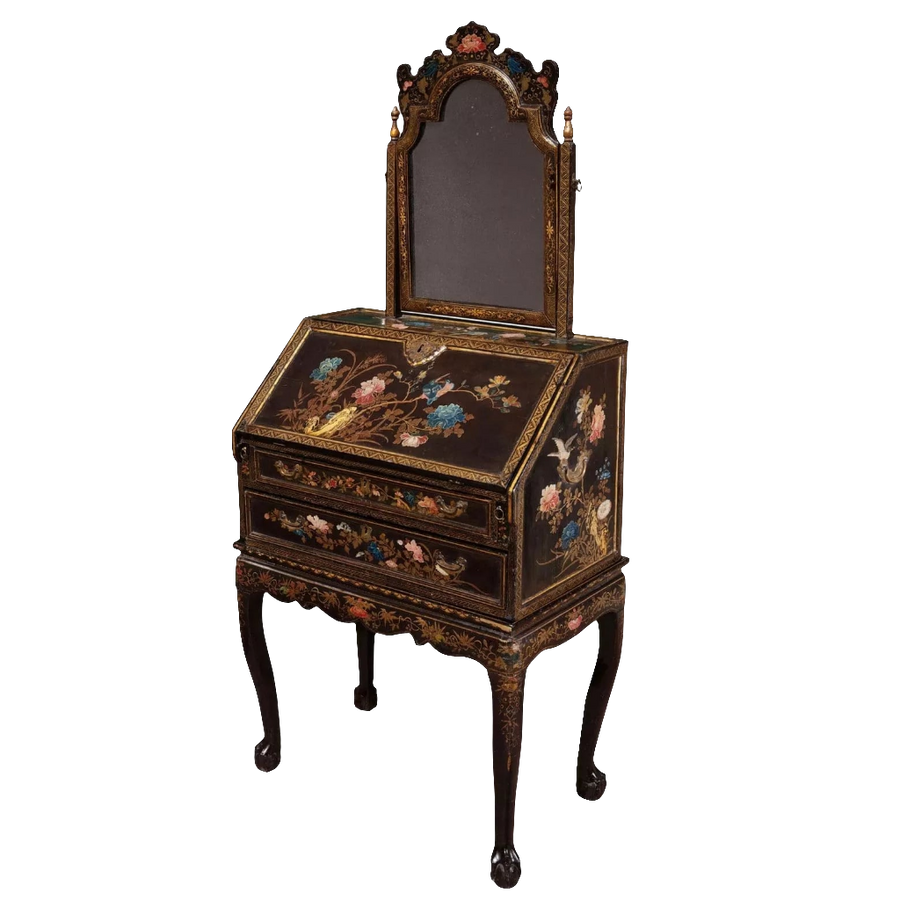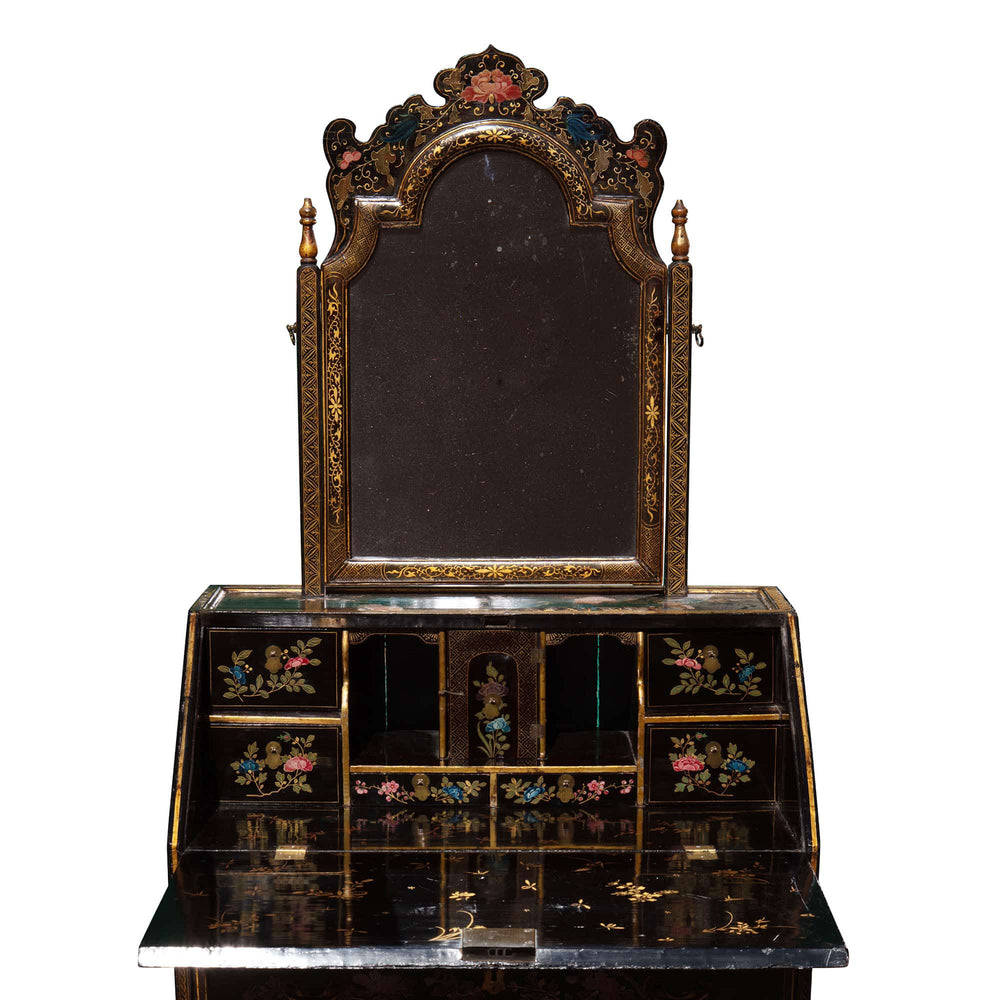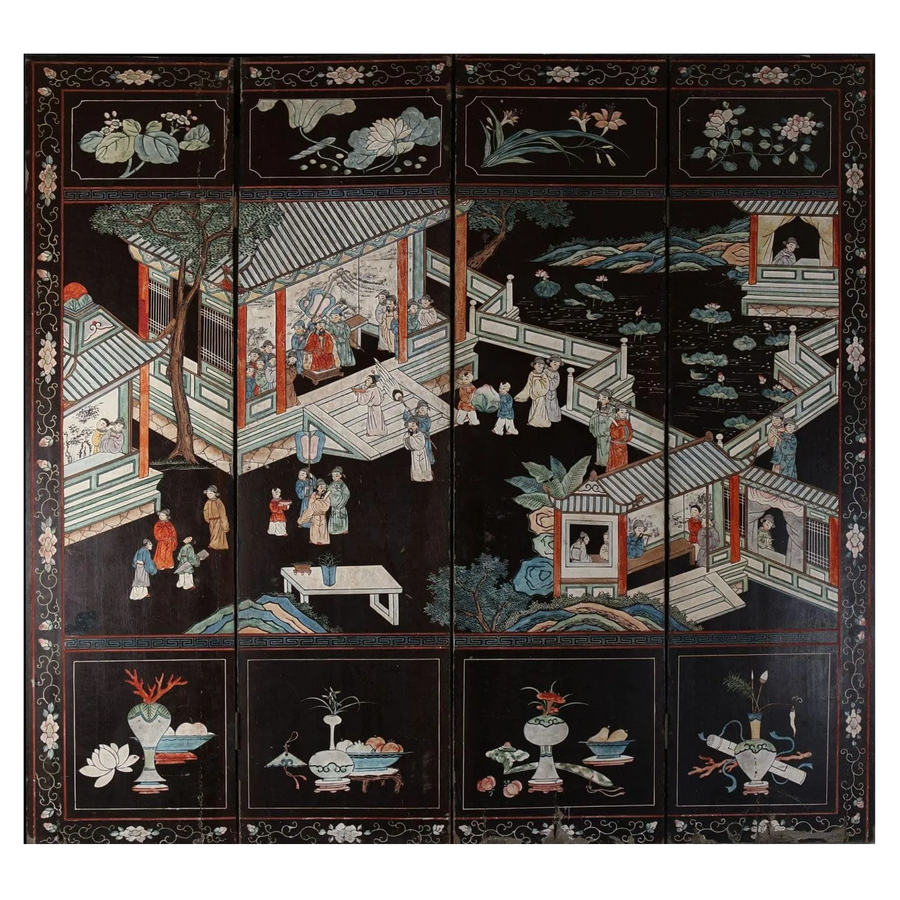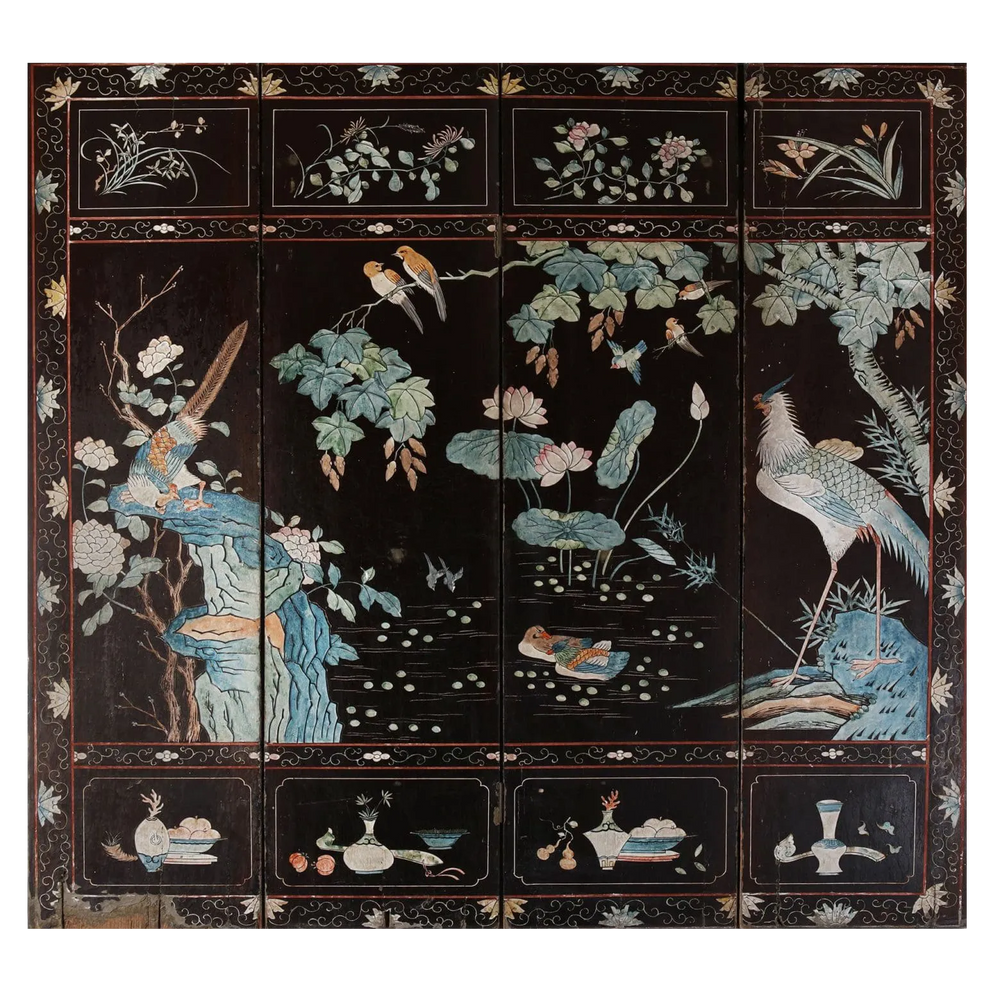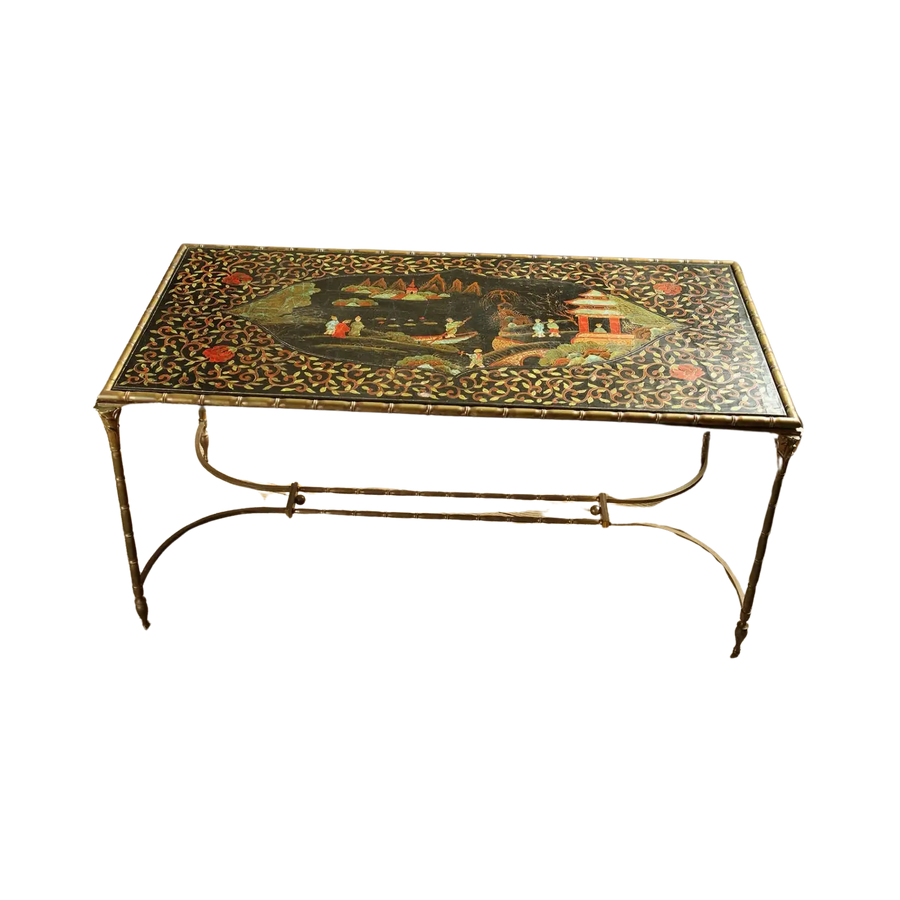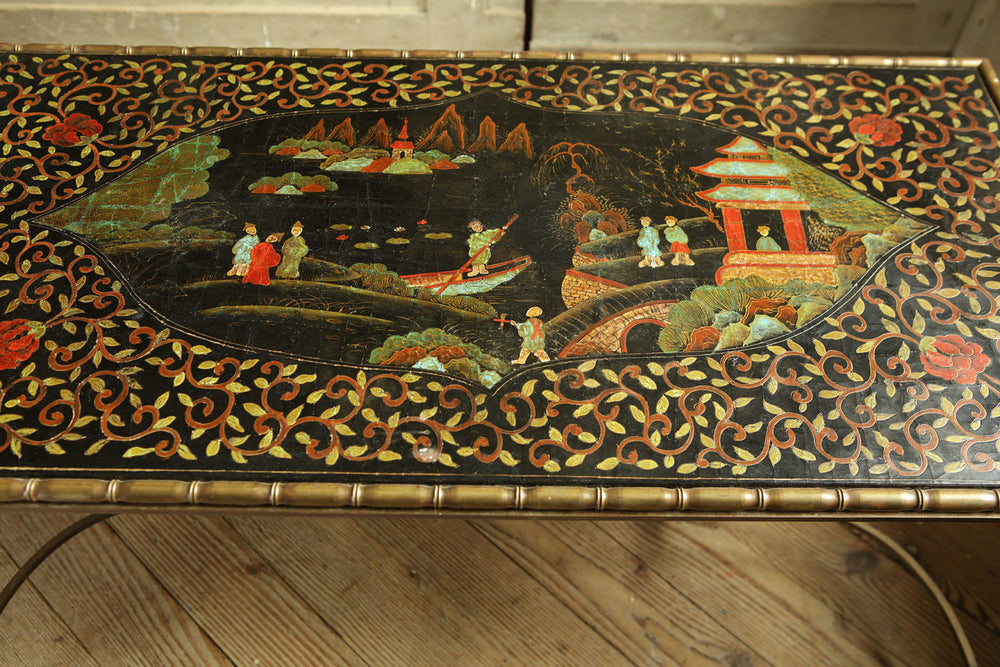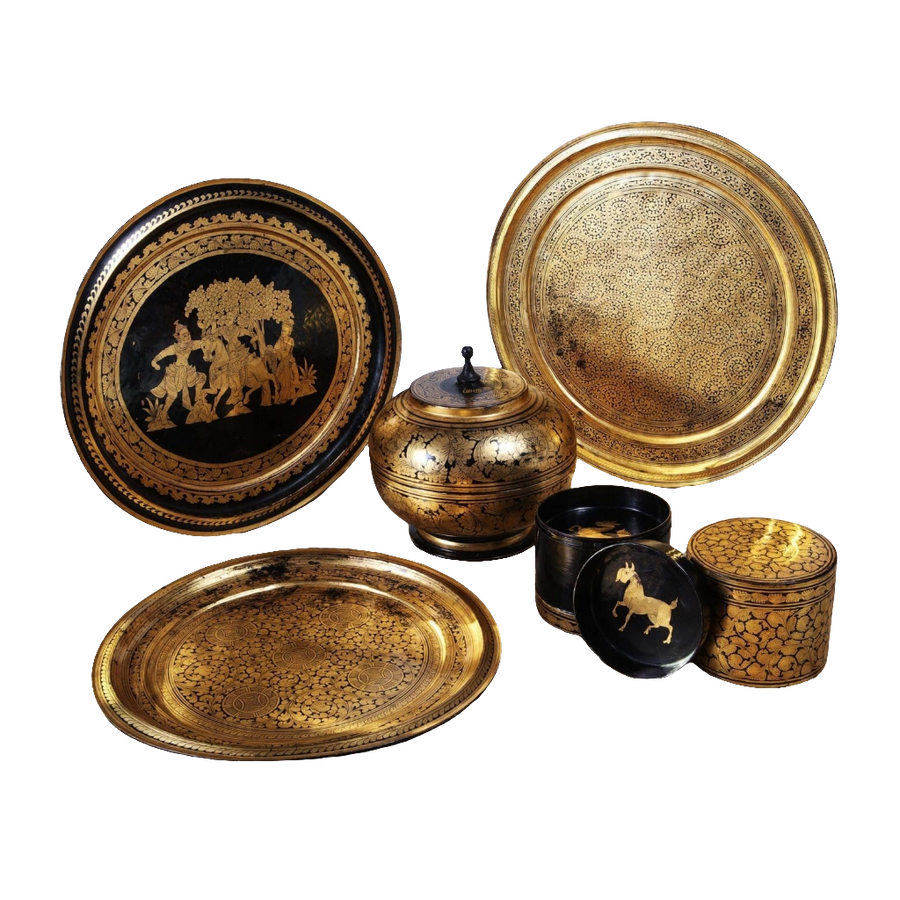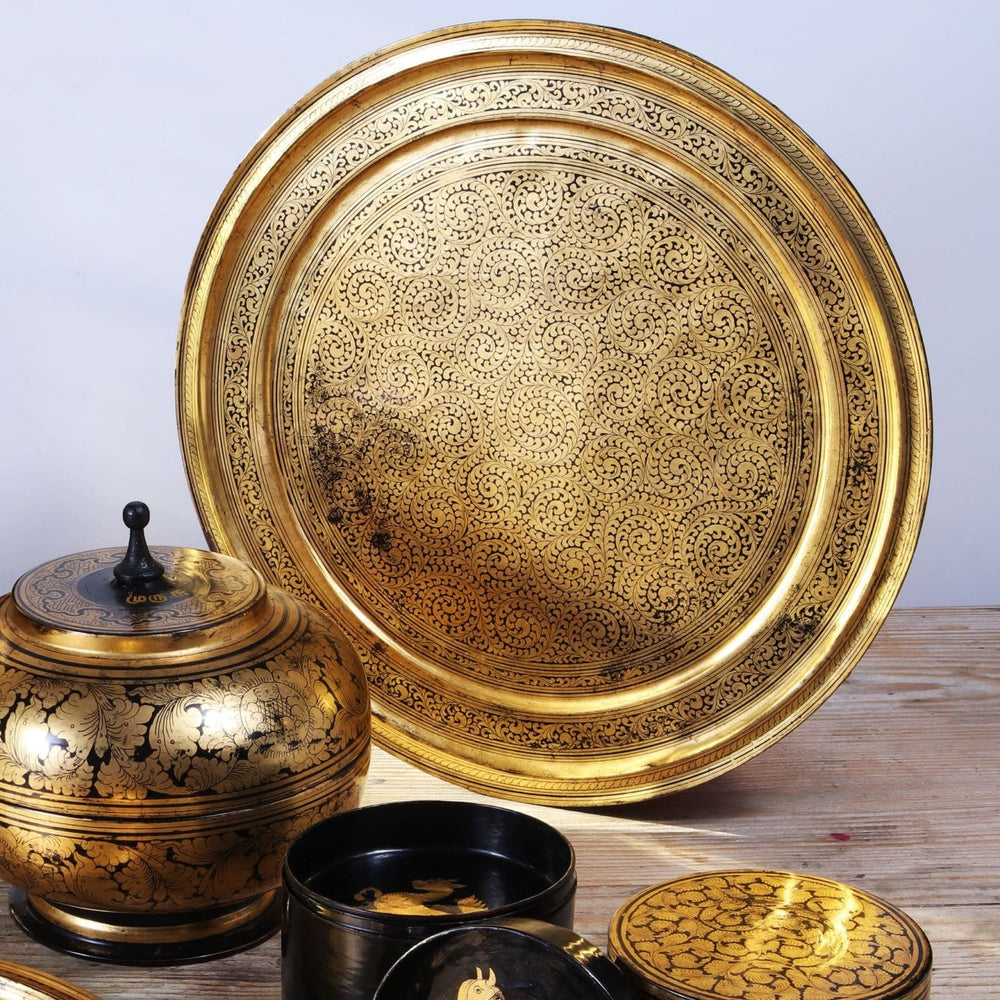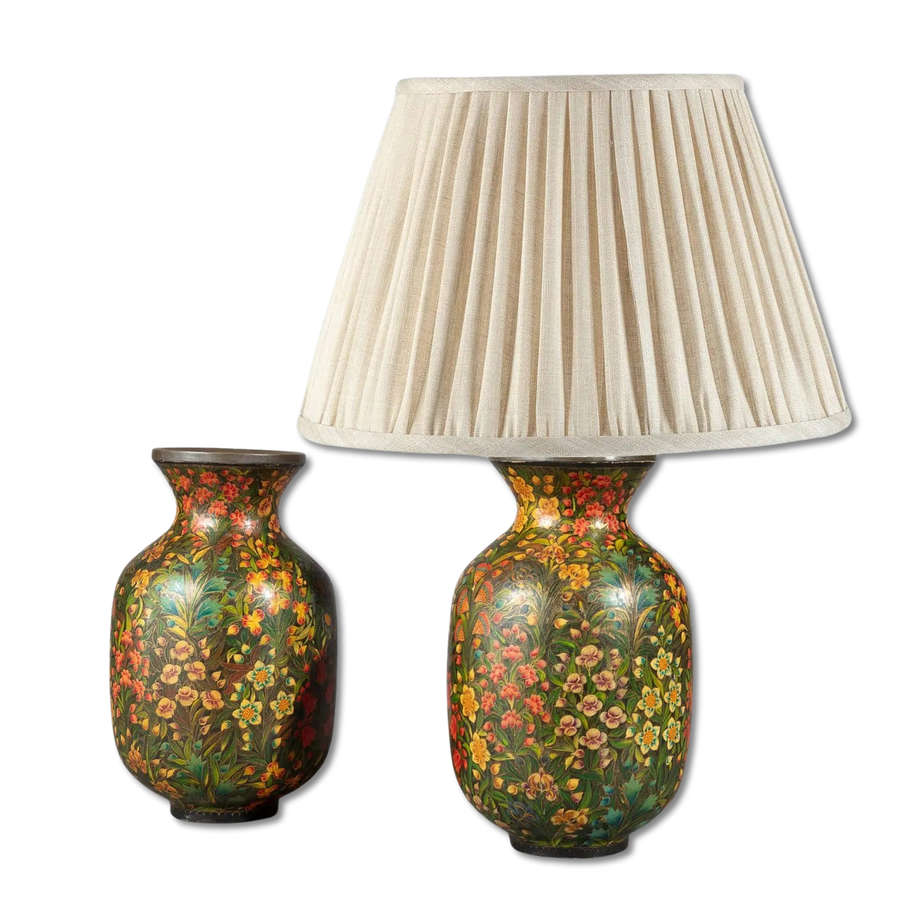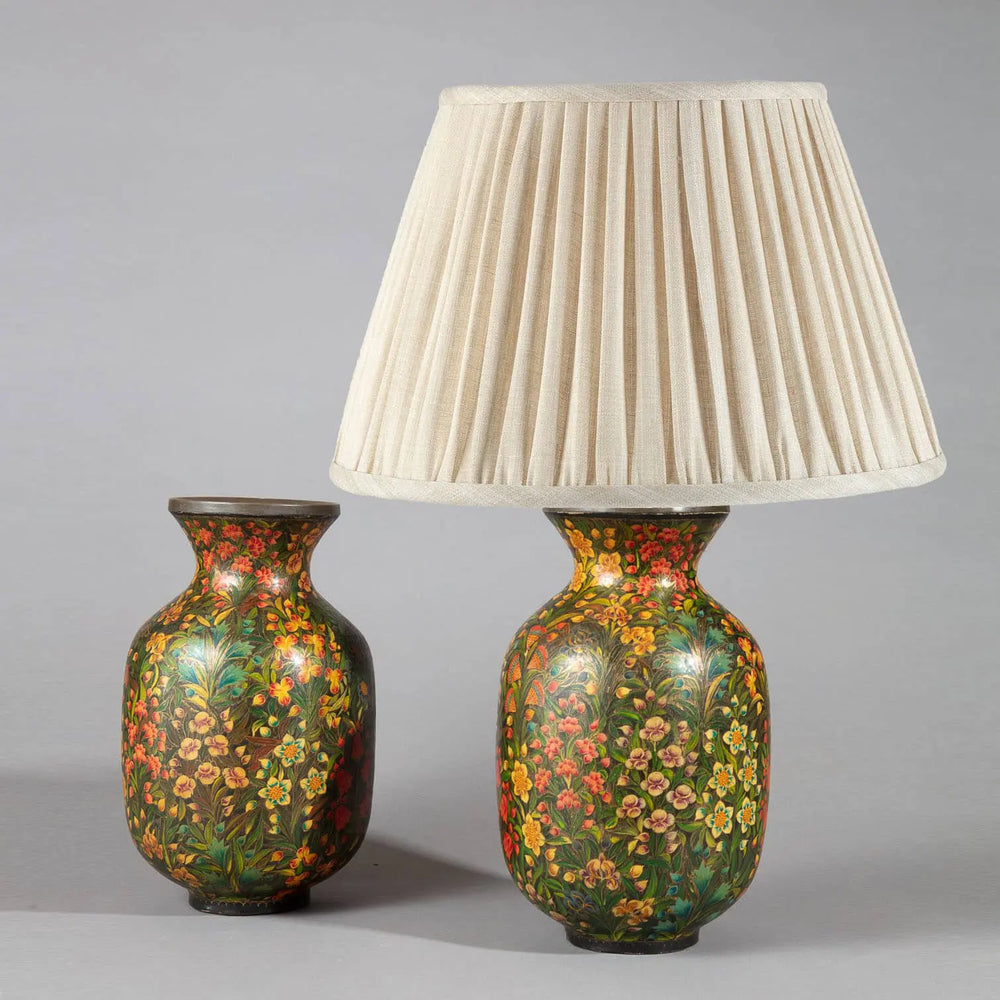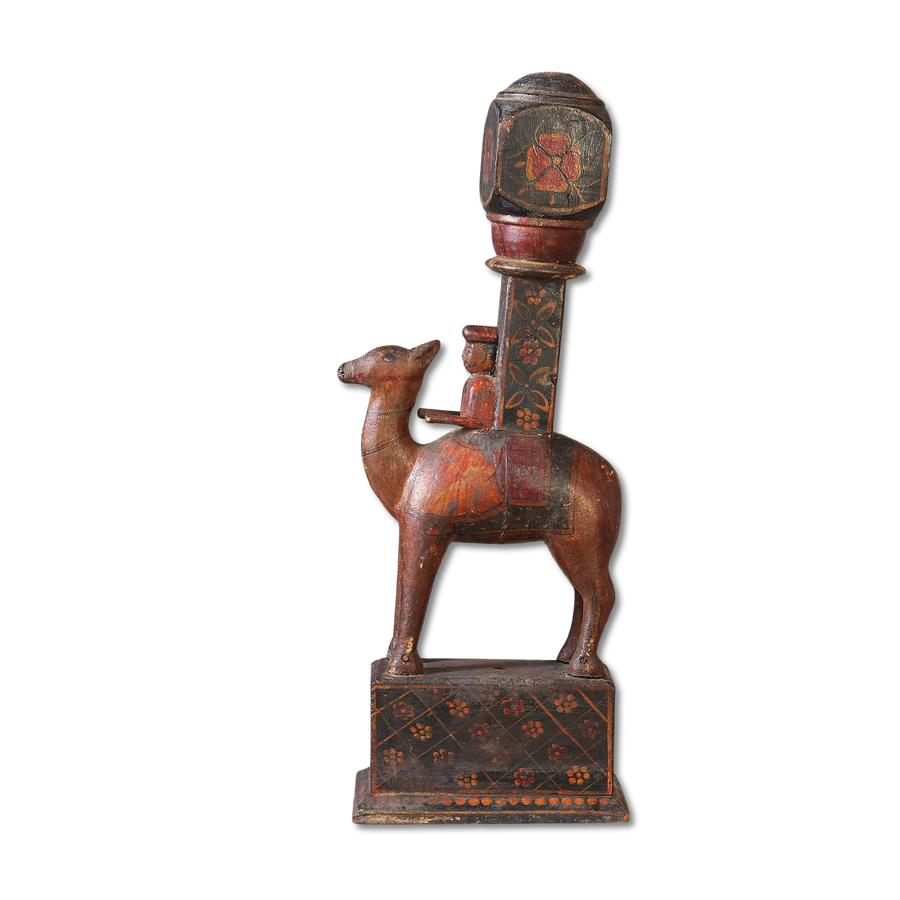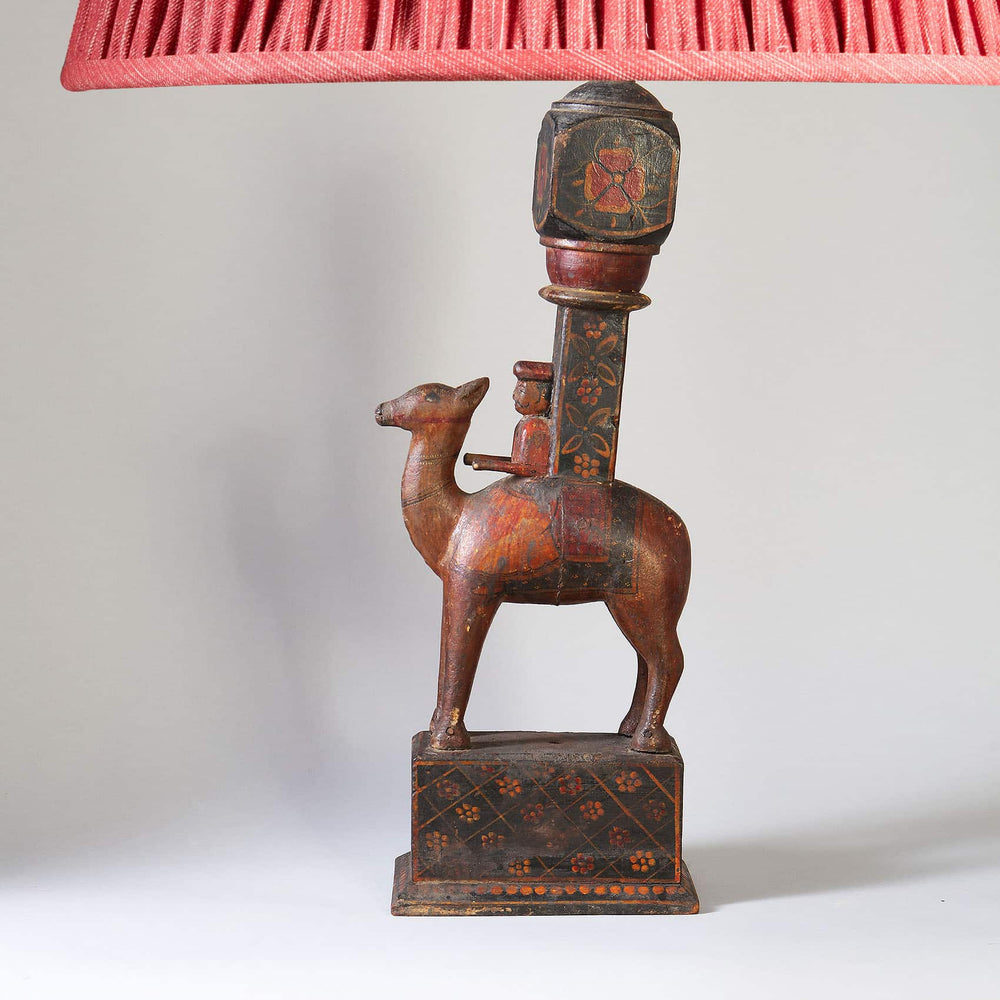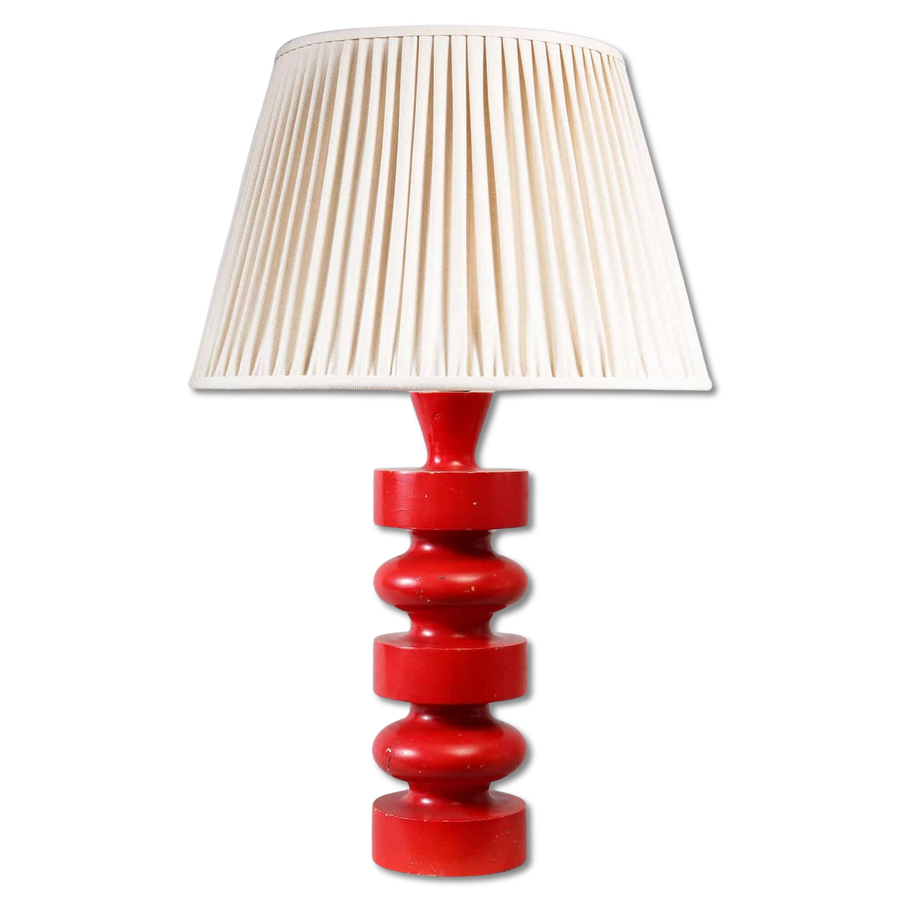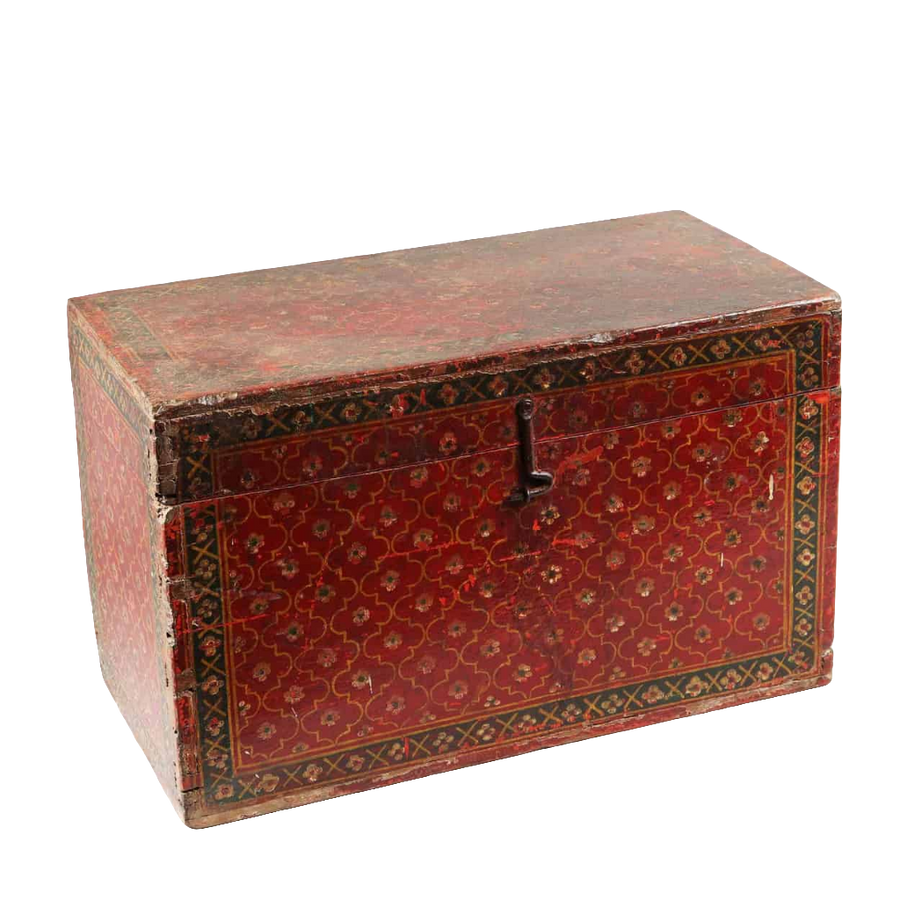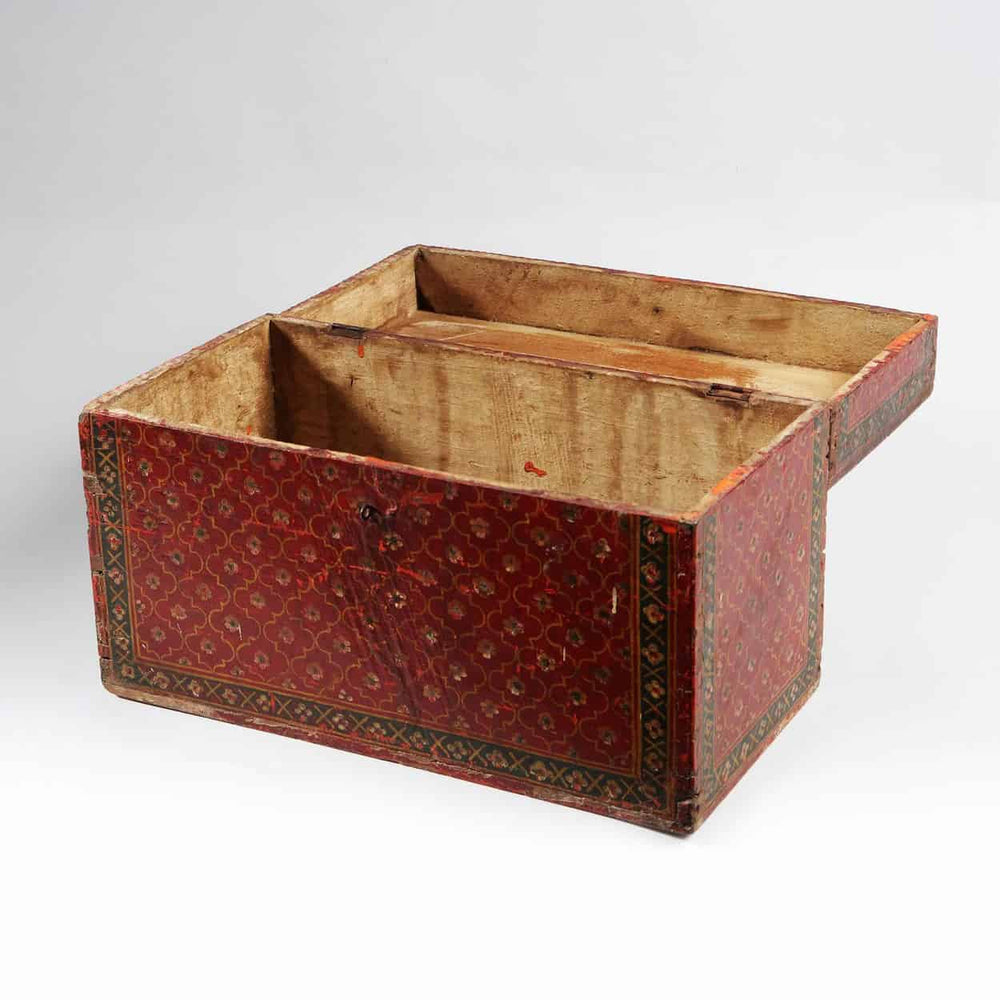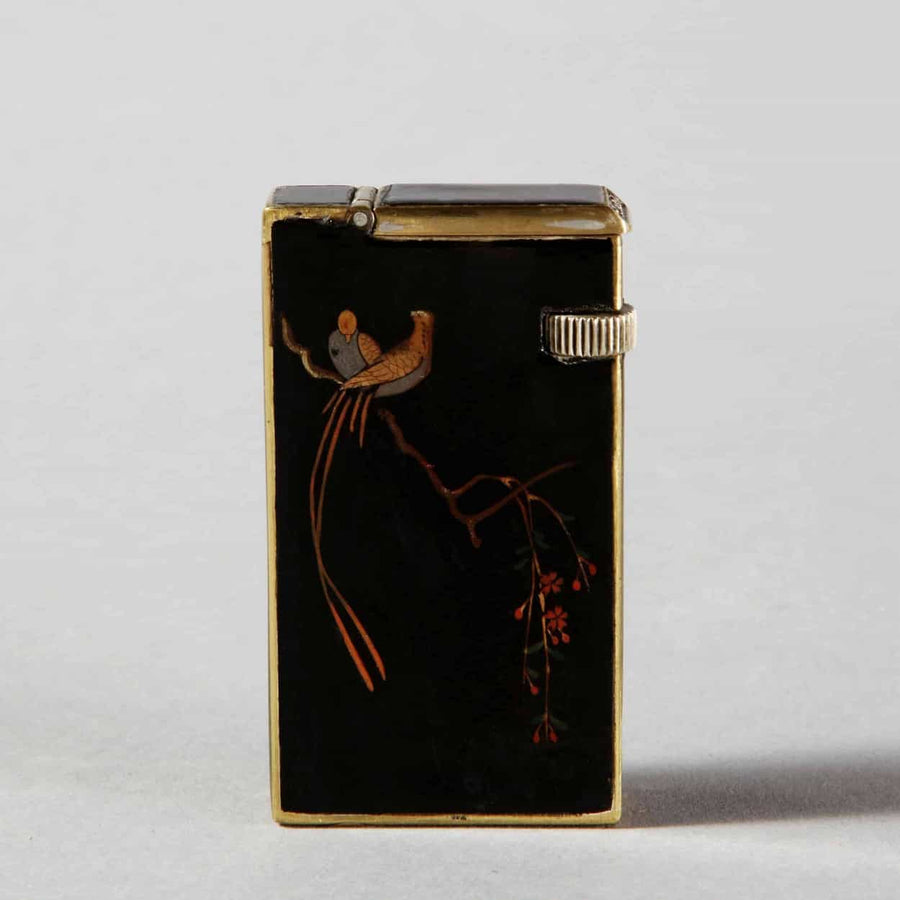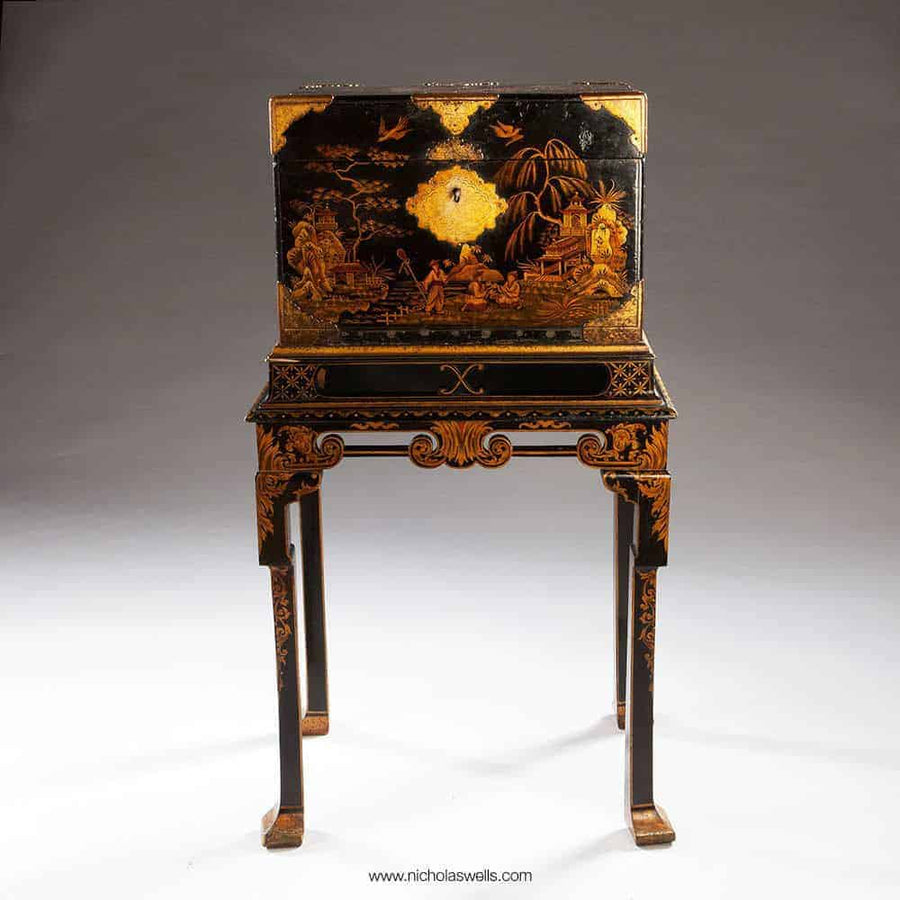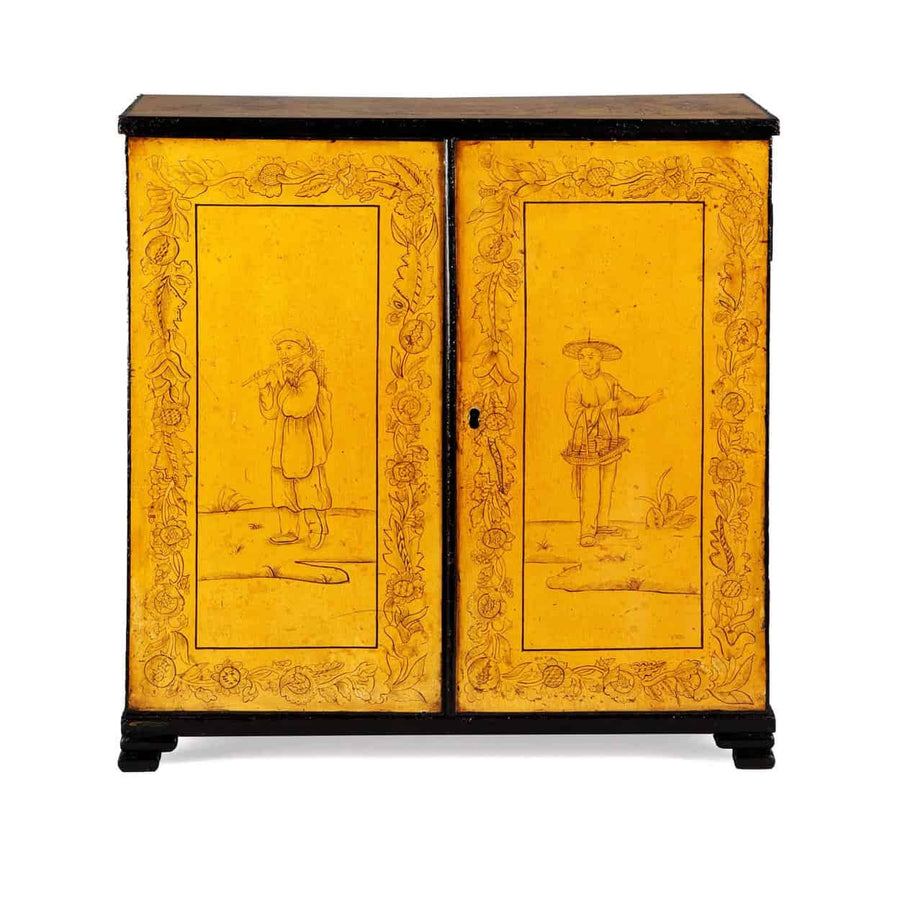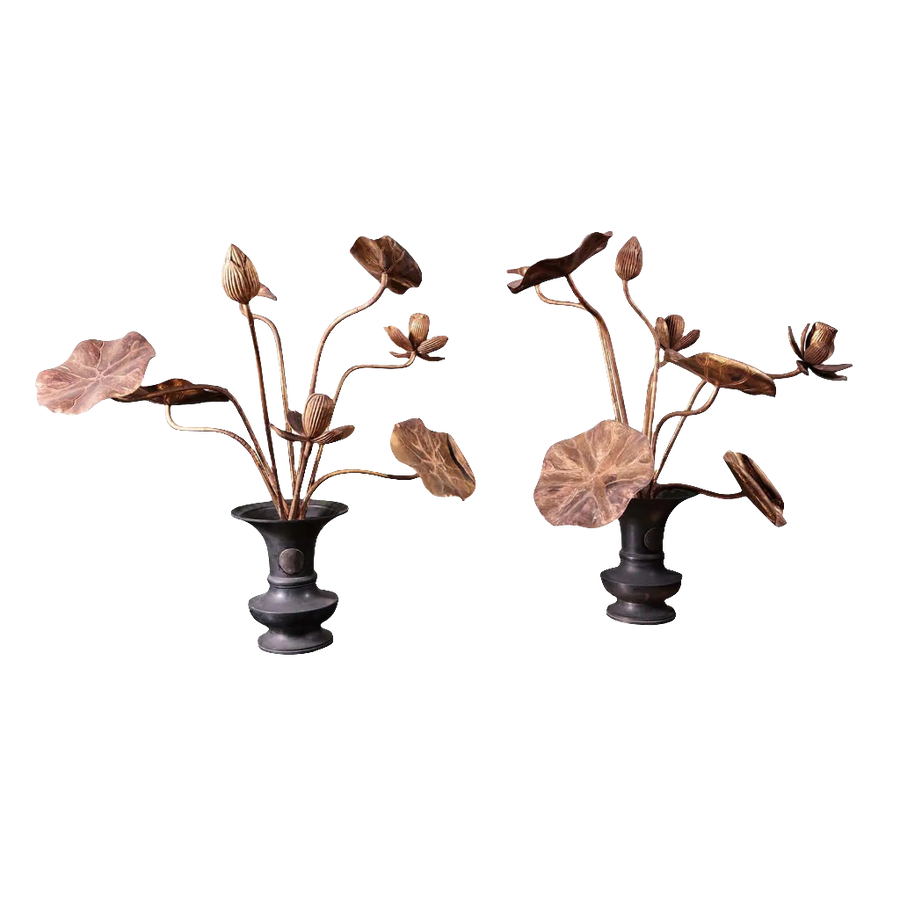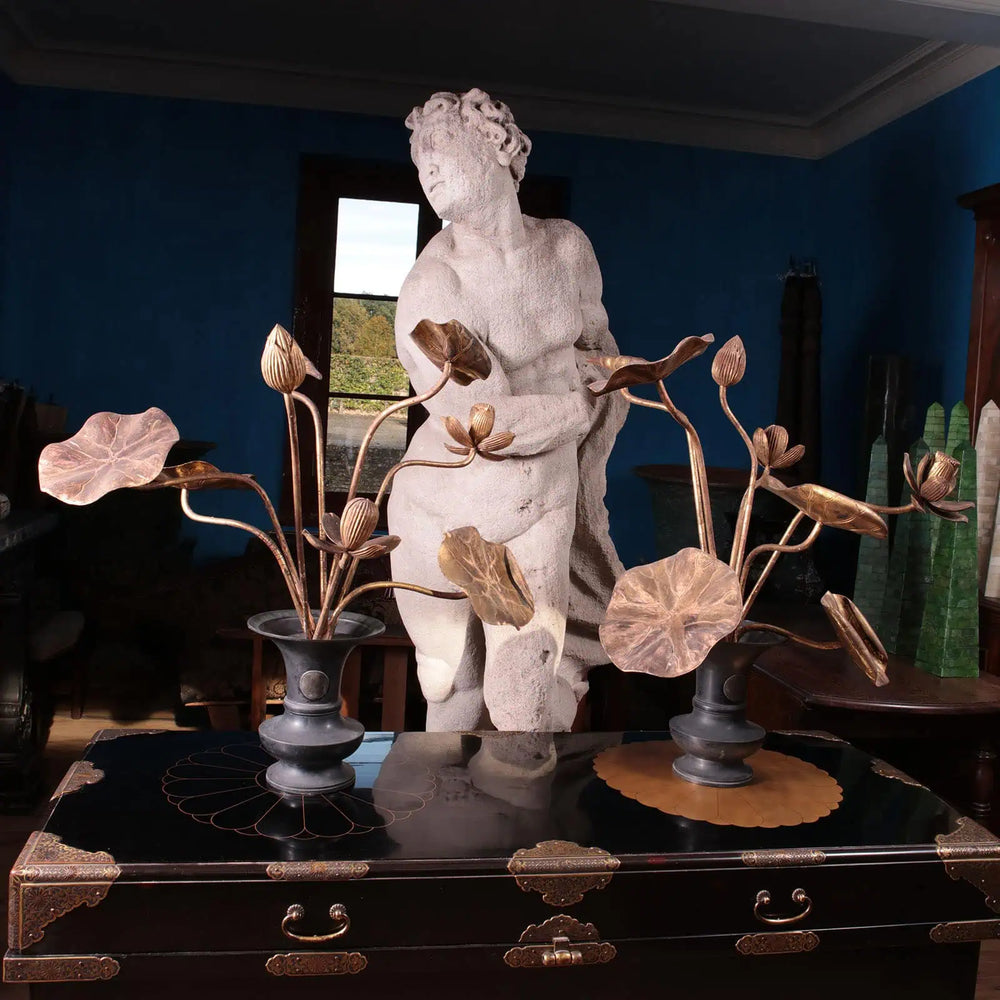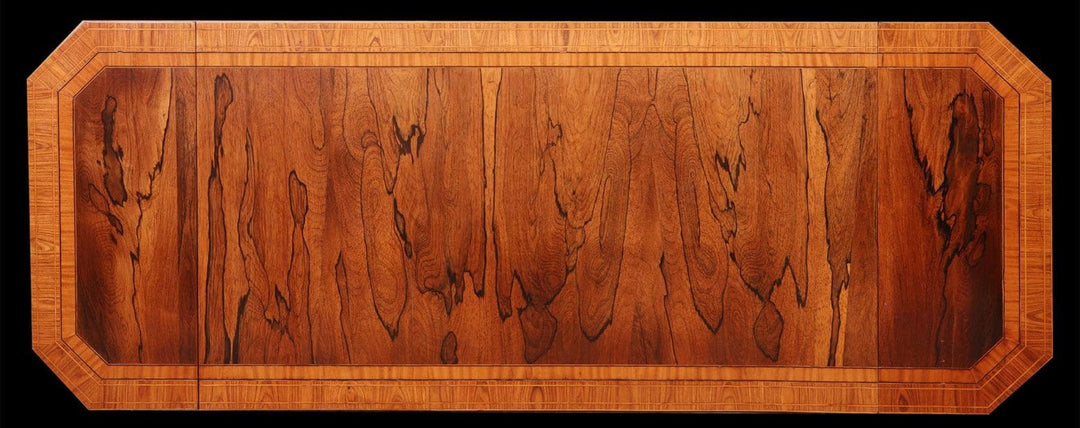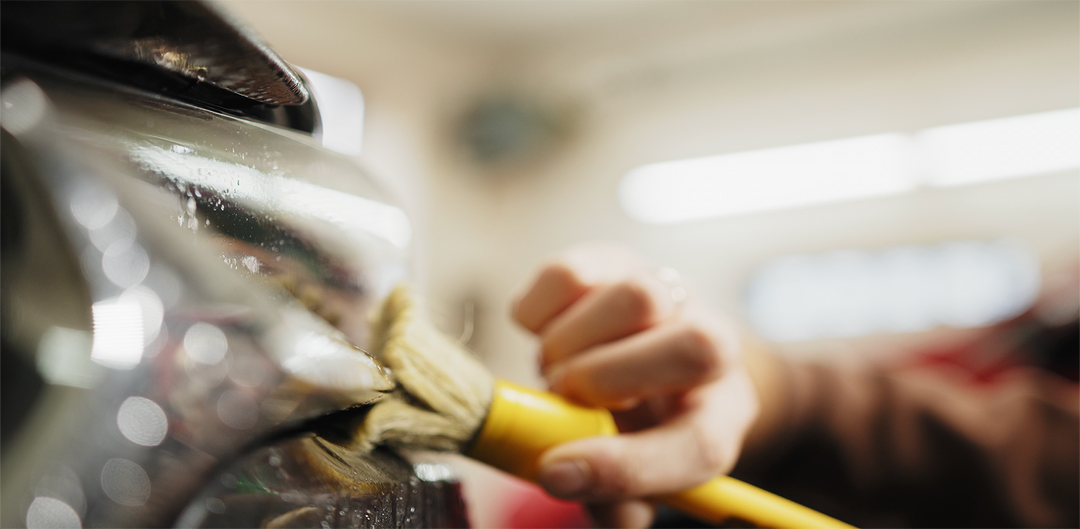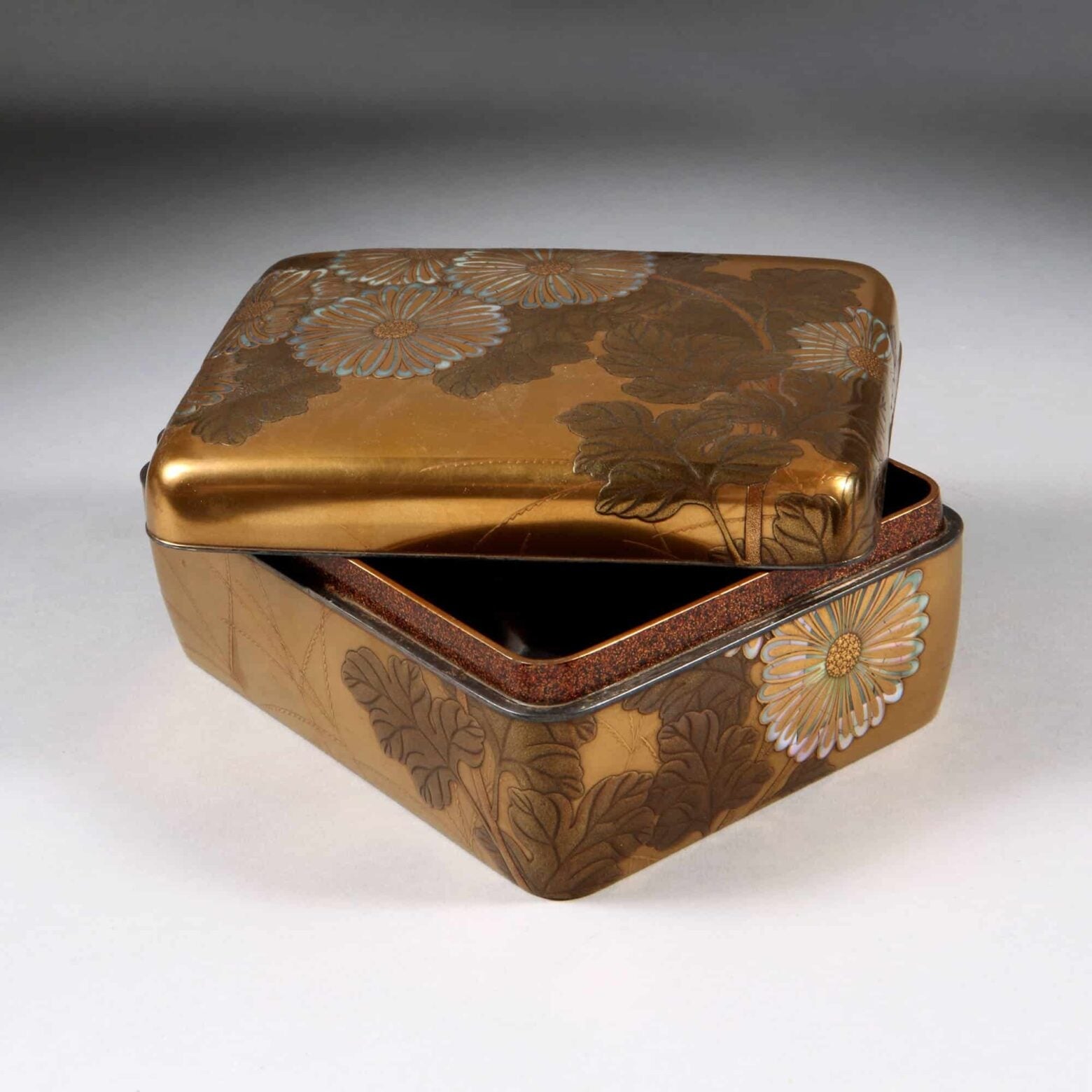
Oriental Lacquer: From the Silk Road to European Interiors
Few materials have captivated collectors and artisans as much as Oriental lacquer. With its deep, lustrous surfaces, elaborate decoration, and extraordinary durability, lacquerwork was one of the most sought-after luxury goods to arrive in Europe from Asia between the 16th and 18th centuries. At Nicholas Wells Antiques, we celebrate this remarkable art form through the lacquered objects, screens, and furniture that embody centuries of cross-cultural exchange.
Origins of Lacquer in Asia
The use of natural lacquer, derived from the sap of the Toxicodendron vernicifluum tree, has an ancient history in China, Japan, and Southeast Asia. Artisans built up multiple layers of lacquer, often in black, red, or gold, to create surfaces that could be carved, inlaid, or painted with intricate decoration. Themes ranged from landscapes and pavilions to birds, dragons, and mythological figures, often imbued with symbolism.
Large folding screens, ornate boxes, and decorative objects showcased technical virtuosity and were prized both domestically and abroad. By the 16th century, lacquerware had become one of the most important exports of Asian craftsmanship.
Trade and the Journey to Europe
Oriental lacquer reached Europe by two primary routes:
-
The Silk Road: Overland caravans carried lacquer objects westward, though fragile pieces rarely survived the long journeys.
-
Sea Voyages: More significant was the maritime trade of the Portuguese, Dutch, and later the English East India Company, which brought chests, cabinets, and screens directly from Asia to European ports.
By the 17th century, lacquer was a fixture of the most fashionable interiors in Paris, London, and Amsterdam. Possessing lacquer signalled worldliness, wealth, and refined taste.
Lacquer in European Interiors
In Europe, large lacquered screens were often dismantled and reused in the creation of cabinets, commodes, and tables. This transformation was orchestrated by the marchands-merciers of Paris—dealers who specialised in importing luxury goods and adapting them for aristocratic clients. They commissioned leading cabinetmakers such as BVRB (Bernard II van Risenburgh) to mount Asian lacquer panels into French rococo and later neoclassical furniture, often framed with gilt-bronze mounts.
This practice not only preserved the beauty of Asian lacquer but also integrated it seamlessly into the vocabulary of European decorative arts.
Themes and Styles
-
Chinese Lacquer: Often black or red, with gilded decoration showing landscapes, pagodas, figures, and auspicious animals such as cranes or phoenixes.
-
Japanese Lacquer (Urushi): Highly refined, frequently with maki-e (sprinkled gold or silver powders), sometimes incorporating mother-of-pearl inlays.
-
Coromandel Screens: Large folding screens carved into thick layers of black lacquer, then filled with coloured pigments to depict lively courtly or landscape scenes.
These motifs not only decorated rooms but also shaped Western perceptions of Asia as exotic, refined, and mysterious.
Legacy and Collecting Today
Today, Oriental lacquer remains highly prized by collectors. Whether in the form of a Japanese export cabinet, a Chinese coromandel screen, or a French commode inlaid with Asian panels, each piece represents a remarkable journey across cultures and centuries.
At Nicholas Wells Antiques, our selection of lacquer objects and furniture reflects this dialogue between East and West—works of art that embody both the technical brilliance of Asian craftsmanship and the ingenuity of European adaptation.
Japanning: Europe’s Answer to High Demand
The scarcity of authentic Asian lacquer — coupled with soaring demand among European elites — soon led to the invention of japanning, a local substitute developed in England, France, and the Netherlands during the 17th century. Using varnishes, pigments, and gilding, European craftsmen imitated the glossy finish and exotic motifs of imported lacquer. Though technically different, japanned furniture and decorative objects became highly fashionable in their own right, reflecting Europe’s fascination with the East while answering the limitations of supply.
Discover Oriental Lacquer with Nicholas Wells Antiques
Explore our collection of Oriental lacquer furniture and decorative objects, and bring home pieces that once crossed oceans to inspire the courts of Europe. These objects are not just antiques; they are testaments to global exchange, enduring beauty, and timeless artistry.




